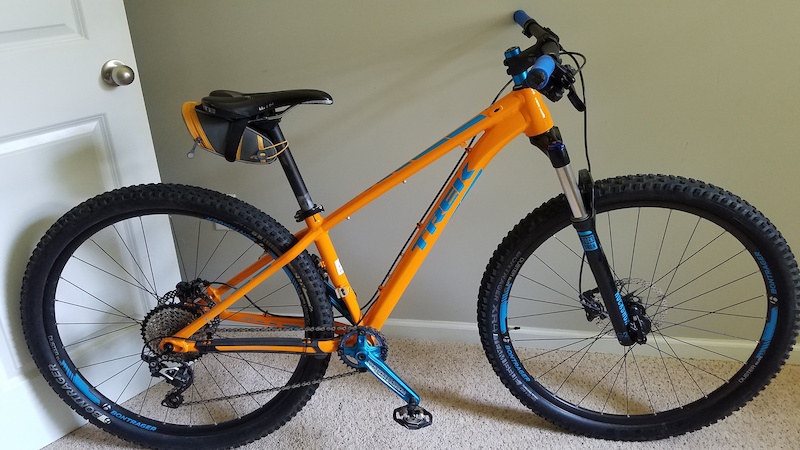

For racing, or going fast, I don’t think it’s where I want to go. Overall, I would say it was an interesting experience. Like any other 29er, the stiffness of the wheel has a big effect of how the bike rides, so it will be something to keep in mind. Those tires are actually not that heavy, at about 880 grams per tire. Going over rocks is a no-brainer, just pick your line and pedal! The bike wasn’t slow or sluggish for pedaling or sprinting, which is a good surprise. The comfort was a bit improved and the grip still impressive. Even at that low pressure, I didn’t feel the tire would roll off the rim. I wanted to see if I could feel the tires flexing or rolling under pressure but they didn’t. I did another up and down in the same area, adjusting the tire pressure to 9psi.

It gave me the impression of carving with fat powder skis on the groomer. Those tires are so big that I needed to adjust my timing to compensate so much tire to roll on edge. When turning tightly, there was a lag until I was truly leaning-in. The bike feels very stable at speed and the grip is good on the open turns. Time to go down! The Ridge trail is a decent mix of fast, flowing (for Sedona) desert single track with a few rock gardens and tight turns. With so much traction in the back and with the shorter chain stays, I was pulling unexpected wheelies on the trail which happened a few times while leaning into a turn and subsequently threw me off. The grip is impressive even on loose gravel or slow step up moves, but the front wheel wanted to lift on the steepest sections. I climbed straight up the rockier lines to feel the capability of monster trucking. On trail it’s immediately shocking how well it filters every rock and brings a comfort to the ride, yet I could tell its a hard tail as the bounce of the rear wheel is still there. To get a feel for the rebound on those massive tires, I went up and down the curbs along the road. I’m used to 29er wheels and it doesn’t feel much different. Out of the gate, the bike rolls very well on pavement. That’s half of what I run in my 2.4 tires! I was told that 14 psi was a bit too much as it might feel bouncy, so I started with 12psi. With such big volume tire, the recommended pressure goes as low as 10psi. The point of this test ride was more about getting a feel for those bigger tires and the way it rides rather than going into component details. It actually felt comfortable out of the box, however, I would have traded the stem for a 50mm if it were my bike. It’s built with wide bars, 1×11, avid brakes, and Chupacabra 3.0 tires. The head angle of the bike is fairly steep and the chainstays are short with 420mm on the big wheel size. I had the opportunity to ride the Trek Stache 7 29″+ hard tail, a 2600$ complete bike. Basically, bigger sized or fatter tires on each respective wheel.Īs for most new concepts, rumors travel fast, and it s always better to test and decide for yourself.
#Stache 7 review plus#
The standard wheel size was set to three options, the classic 26″ and 29″ wheel and the most recent 27.5″ wheel sizes.Īs one starts to get comfortable and has dialed-in their bike, it seems the industry has yet again thrown at us two new standards for consumers to play with: the 27.5″ plus and 29″ plus. In recent years the bike industry has introduced new wheel sizes back to back, sometimes confusing consumers what to choose for their use.


 0 kommentar(er)
0 kommentar(er)
